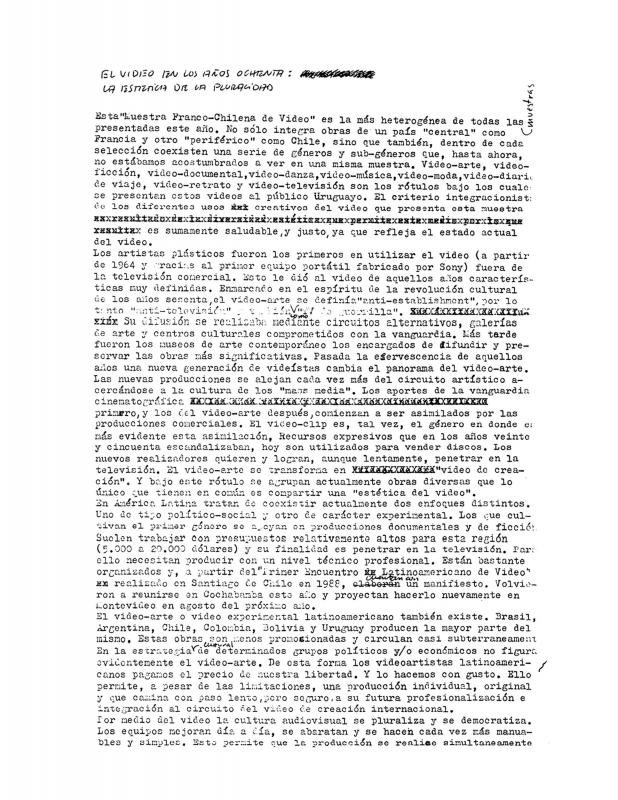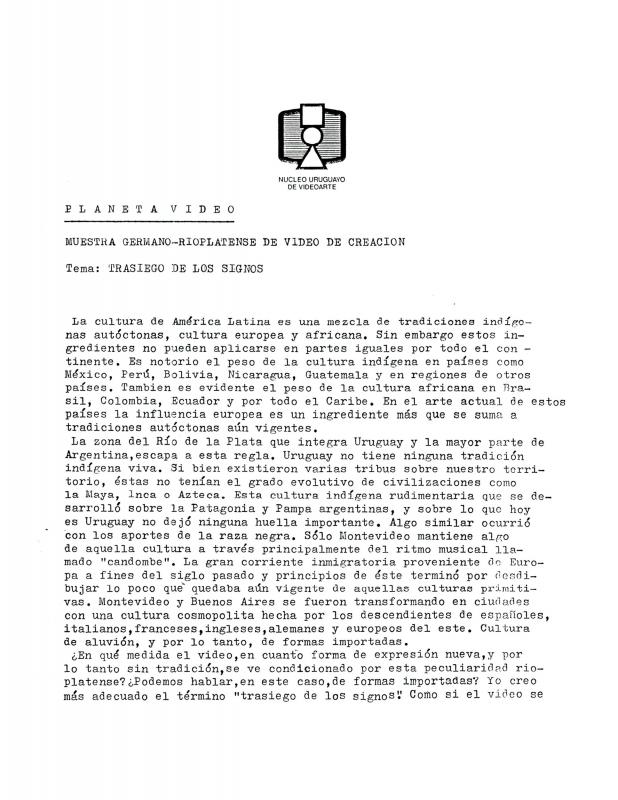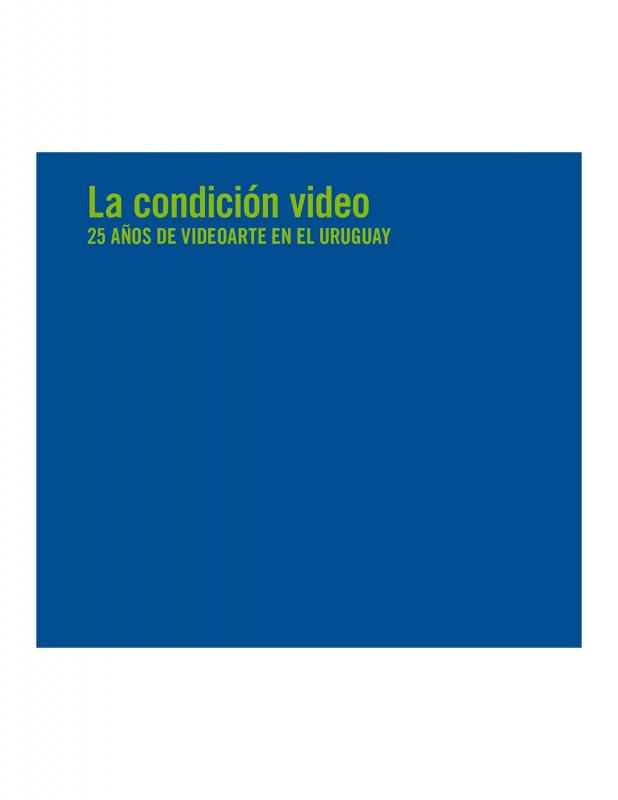The first exhibition of Uruguayan video art took place in 1985. Several years later, the series of exhibitions entitled Videos en Banda was launched. Featuring work from Uruguay and beyond, those shows not only disseminated video art in Uruguay, but also afforded local video production international visibility. The third edition of Videos en Banda was held in 1993. It contained works produced from 1983 to 1989 in Uruguay and in Spain. The catalogue texts attest to the vertiginous nature of the technological changes taking place with the dawn of the digital age—changes about which they are, arguably, overly optimistic. According to the pioneers of Uruguayan video art, this new age with its new processes rendered all languages based on earlier technology obsolete. The texts also speak of the “resistance” on the part of local criticism to these new experiments. All of this in the context of a specific historical moment in Uruguay and, indeed, in much of Latin America: the demise of brutal dictatorial regimes.
Despite a lack of funding and scant access to technology, video art has always had an important place in Latin American art. In some countries in the region (Argentina, Brazil, Mexico, Colombia, Peru, and Chile), video art began to develop in the sixties and seventies; works of video art first received recognition in countries like Uruguay, Bolivia, and Venezuela in the eighties; in the nineties, video artists from Ecuador and Cuba began to emerge on the international scene.
A great deal of video art from Latin America addresses political and social issues and, as such, it differs from the work of Western video artists like Nam June Paik, Wolf Vostell, and Bruce Nauman that largely revolves around innovation in artistic language. Latin American creators tend to look to video as a means to engage questions of daily life and identity in works that address different facets of socio-cultural and political development.
[For further reading on video art, see the following texts in the ICAA digital archive: by Alejandro Ferreiro “A diez años del primer videoarte uruguayo, sus hacedores luchan por extensión de la especie” (doc. no. 1259350); and by Fernando Alvarez Cozzi “El video en los años 80. La estética de la pluralidad” (doc. no. 1258602), “Planeta Video. Muestra Germano-Rioplatense de Video Creación” (doc. no. 1258641), and “La condición video. 25 años de videoarte en el Uruguay” (doc. no. 1258411)].



